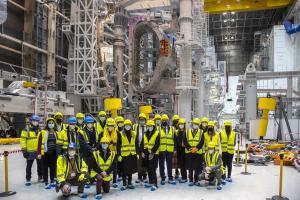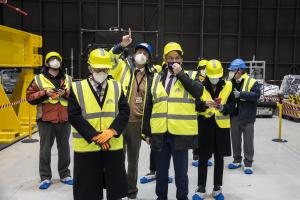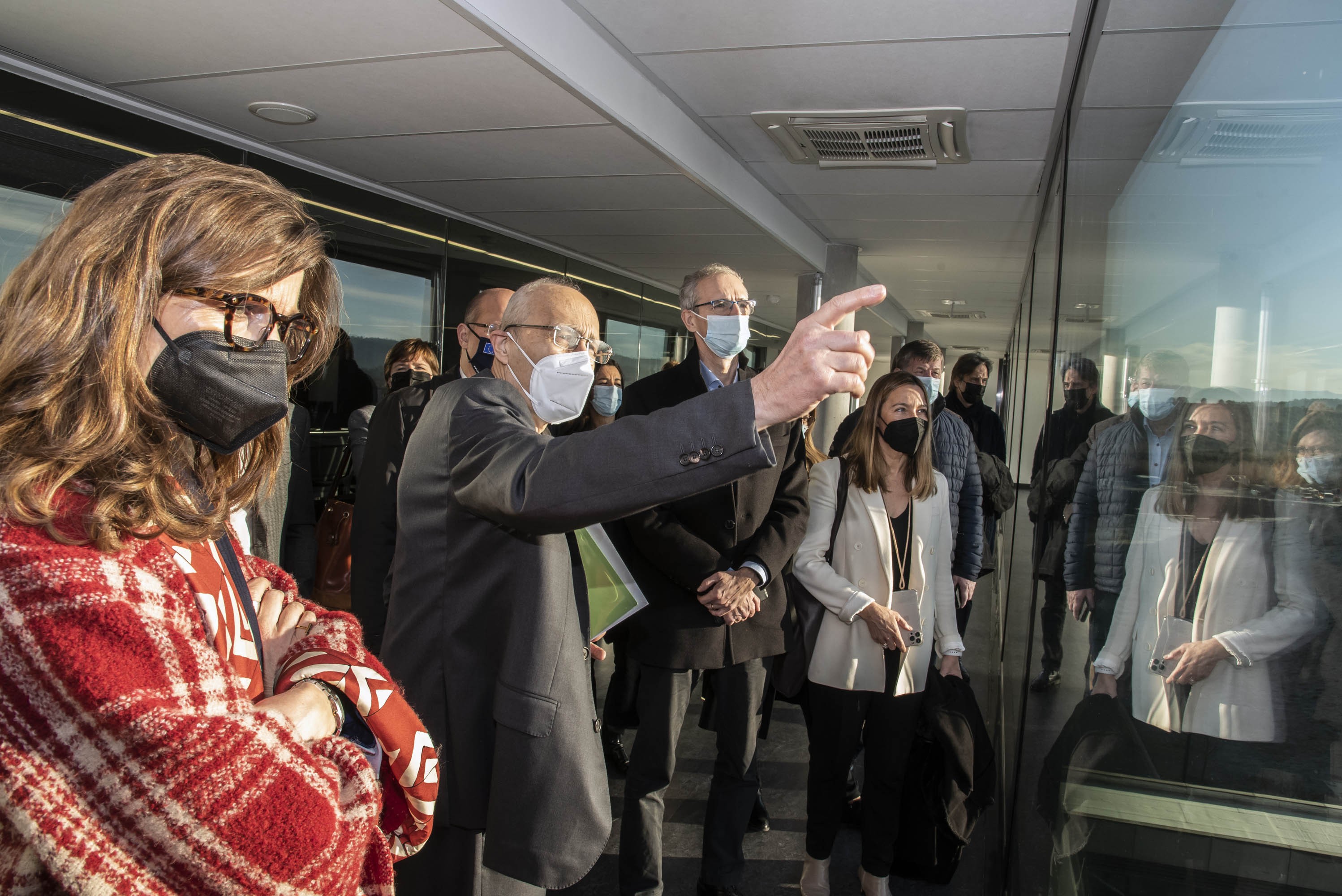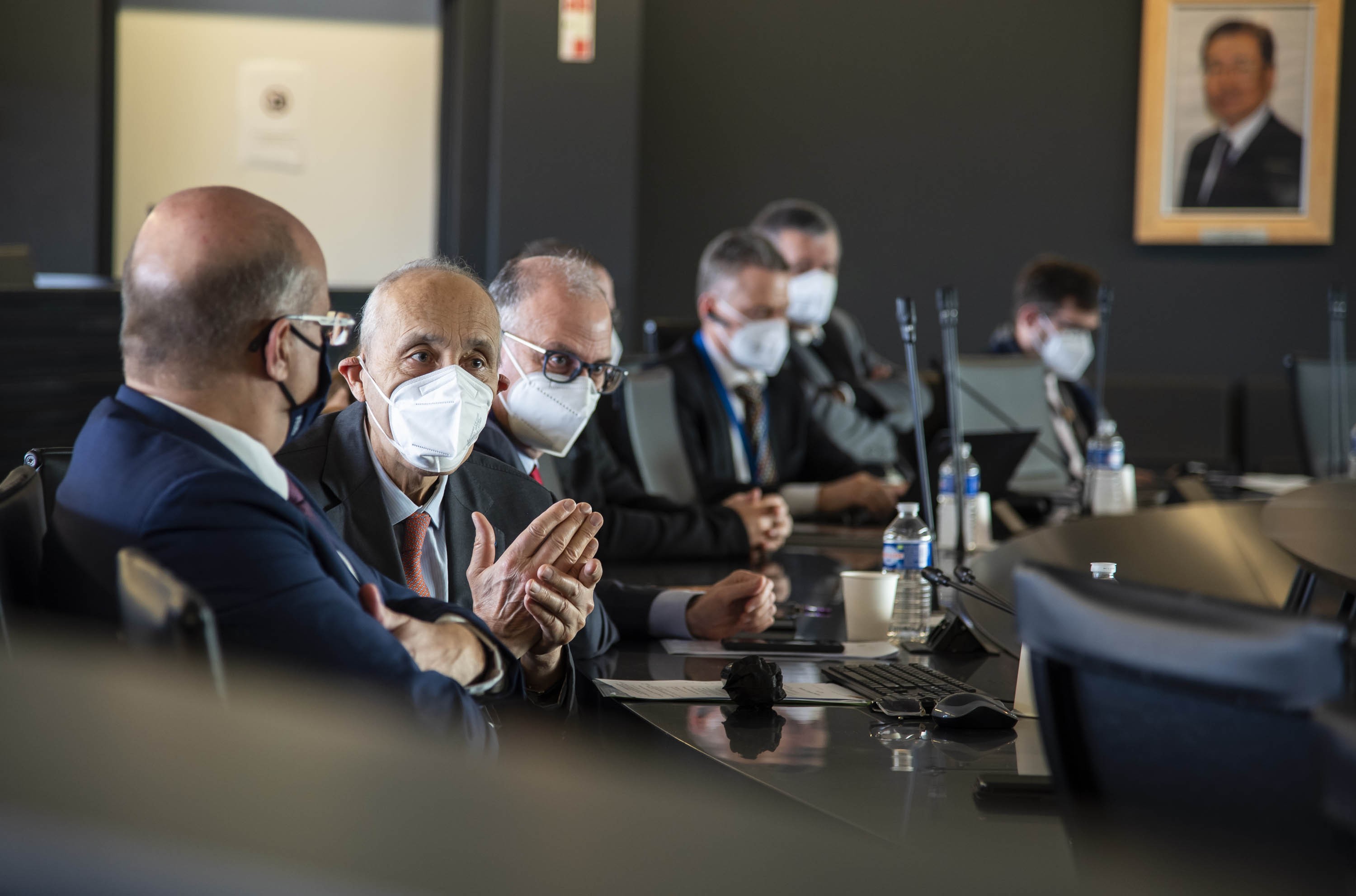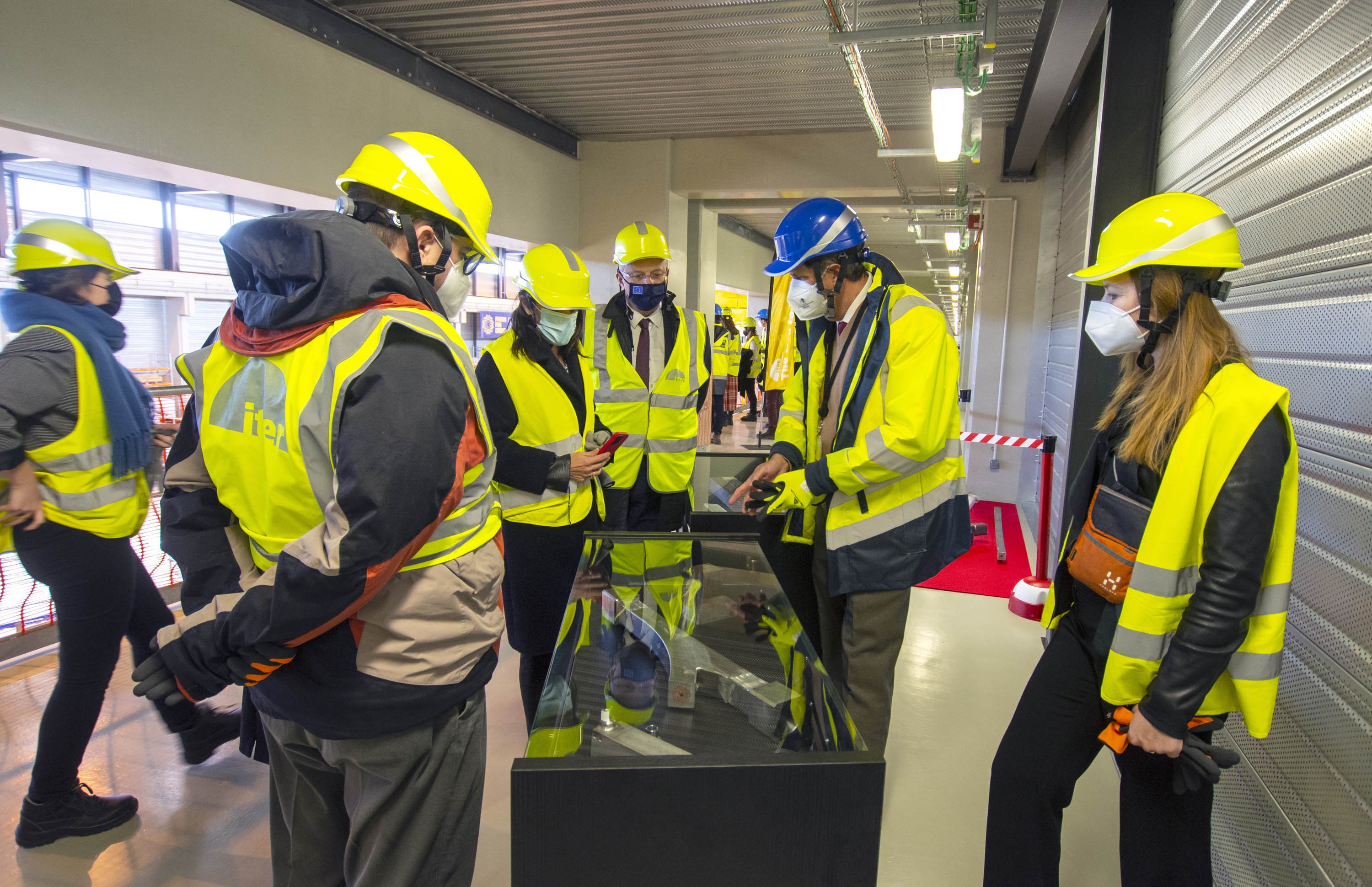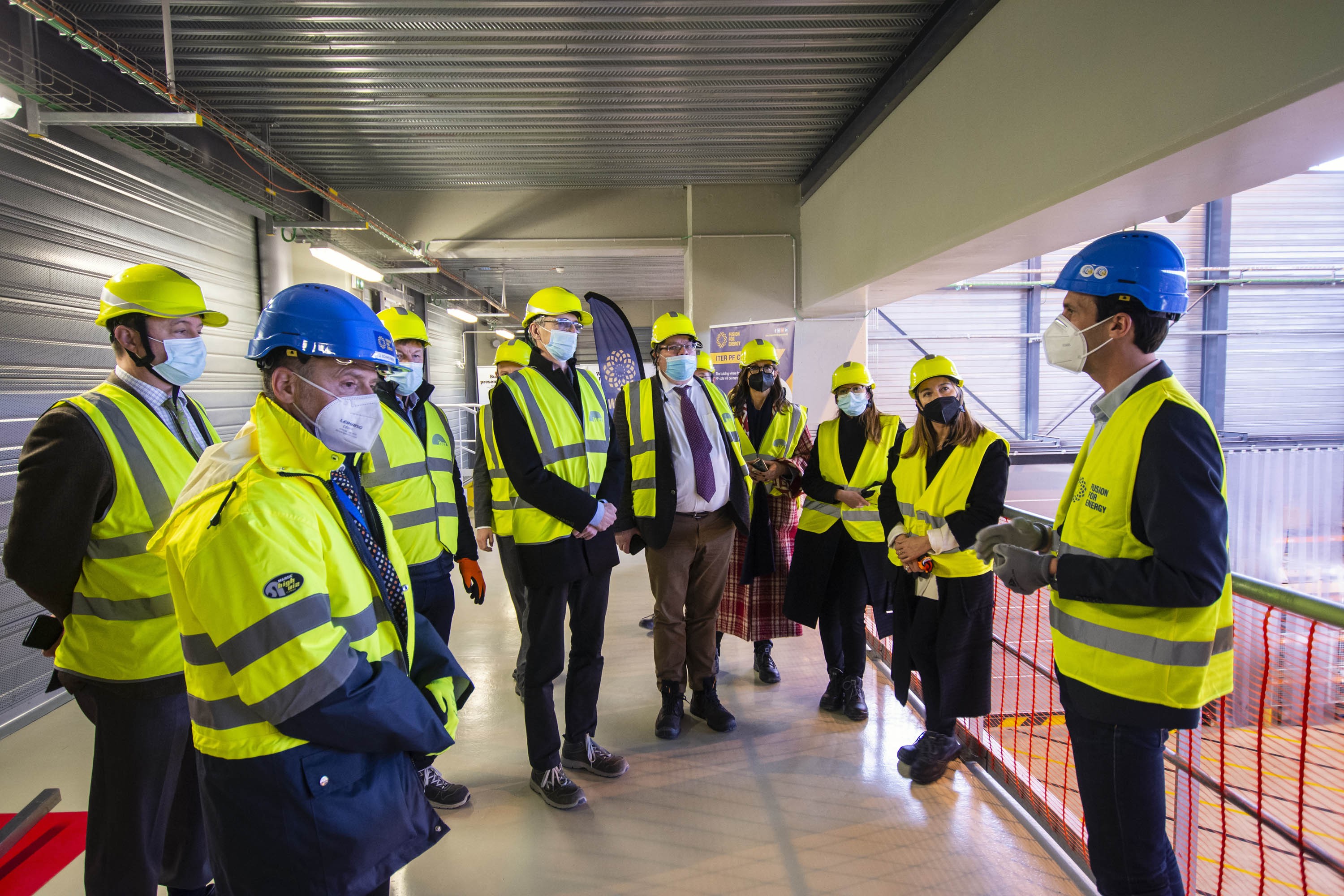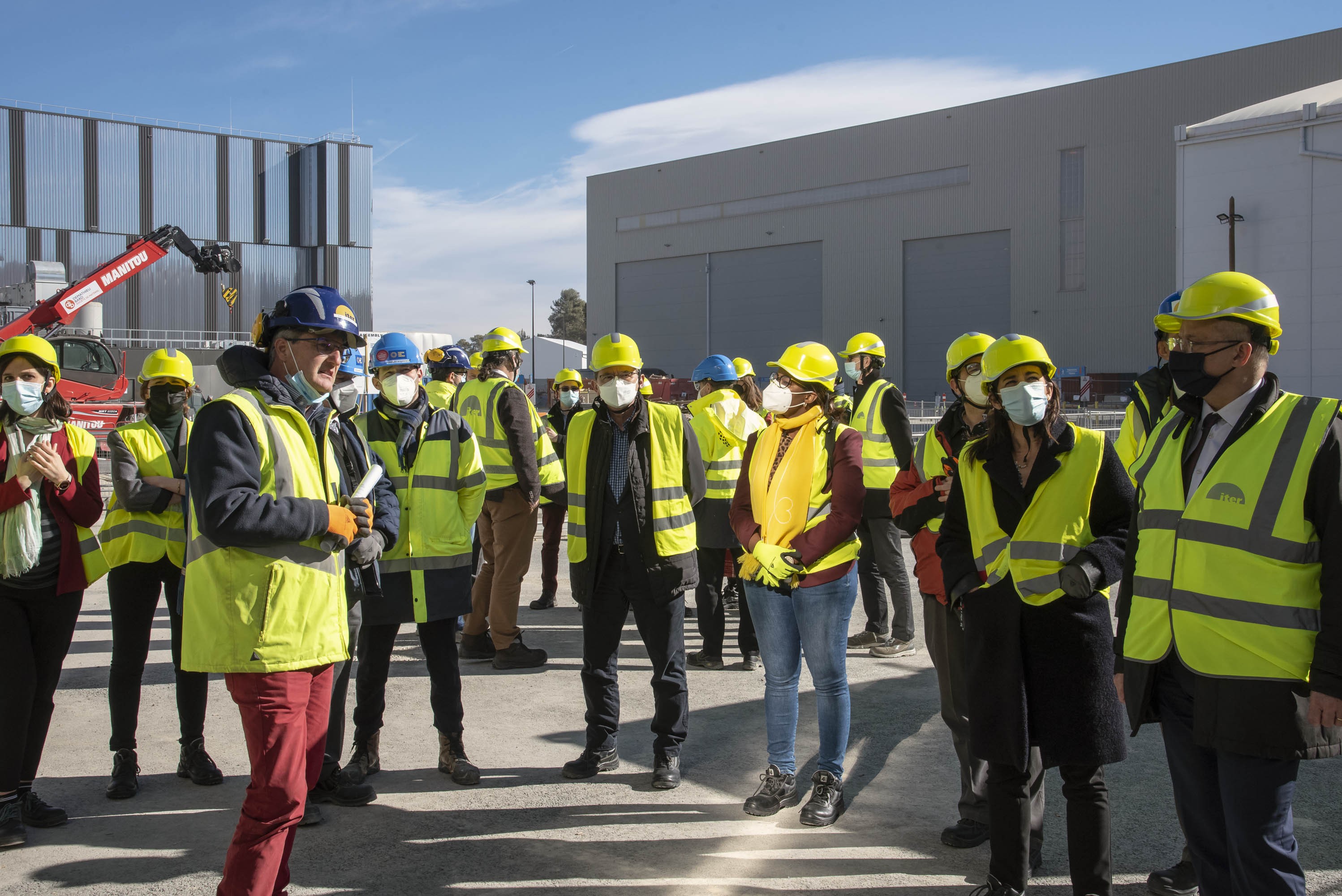"What we see is very comforting"
The European Union plays a major role in ITER. But for many in the European Parliament, the project is still an abstraction—something very large and utterly complex, founded on an arcane physics principle that offers a promise (unlimited, clean and safe energy) that seems too good to be true. Christophe Grudler, a French Member of the European Parliament (MEP) is among those who have "always believed in hydrogen fusion." Recently, he established what he calls "an informal inter-group" that brings together close to one hundred MEPs convinced that "nuclear power is a real opportunity for Europe" and determined to explore and assess its future. On Monday 31 January, Grudler led a delegation of 11 of his colleagues, hailing from nine different countries and representing four different political groups, on an in-depth visit of the ITER worksite.
The group was welcomed at ITER Headquarters by Bernard Bigot, the Director-General of the ITER Organization, and by Massimo Garribba, who was present "wearing two hats"—that of Head of the ITER Council for a two-year mandate and that of Deputy Director-General of the European Commission's Directorate-General Energy.
After presentations on ITER history, progress and challenges by Bernard Bigot and Johannes Schwemmer, the Director of the European Domestic Agency Fusion for Energy, the delegation headed to the on-site coil winding facility where Europe manufactures the largest superconducting coils ever designed. Taking in the 250-metre-long facility, the workstations in succession, and the two 24-metre-in-diameter ring magnet coils that are currently going through the multi-step fabrication process, the MEPs had a first indication of the spectacular nature of the project.
The impression was confirmed by the visit of the Assembly Hall, guided by Alain Bécoulet, ITER Head of the Engineering Domain, and Laurent Schmieder, Fusion for Energy Program Manager for Buildings, Infrastructure and Power Supplies. "Of course I had an idea of what to expect," said MEP Grudler as he stood under one of the massive vacuum vessel sectors docked vertically in one of the twin sub-assembly tools. "But I didn't anticipate seeing so many components ready to be assembled. For us parliamentarians, this is very comforting. We see the work being done, it's reassuring."
After a long pause at the edge of the tokamak pit (and innumerable selfies), the delegation headed for the last stop in the visit: the ITER cryoplant, where David Grillot, Cryogenic Section Leader, and Nicolas Navion-Maillot, a cryogenic engineer, guided a quick visit.
There are other awe-inspiring places on the ITER worksite but the coil winding facility, the Assembly Hall and adjacent tokamak pit, and the cryoplant are emblematic of the size and scope of the project. "What we have seen and understood today will enable us to promote ITER and fusion, and to share our conviction with our colleagues in the EU Parliament," said Grudler, as the delegation prepared to board the bus at the end of the visit. "What we have seen here is European money at work."
See the press release issued after the event here.

